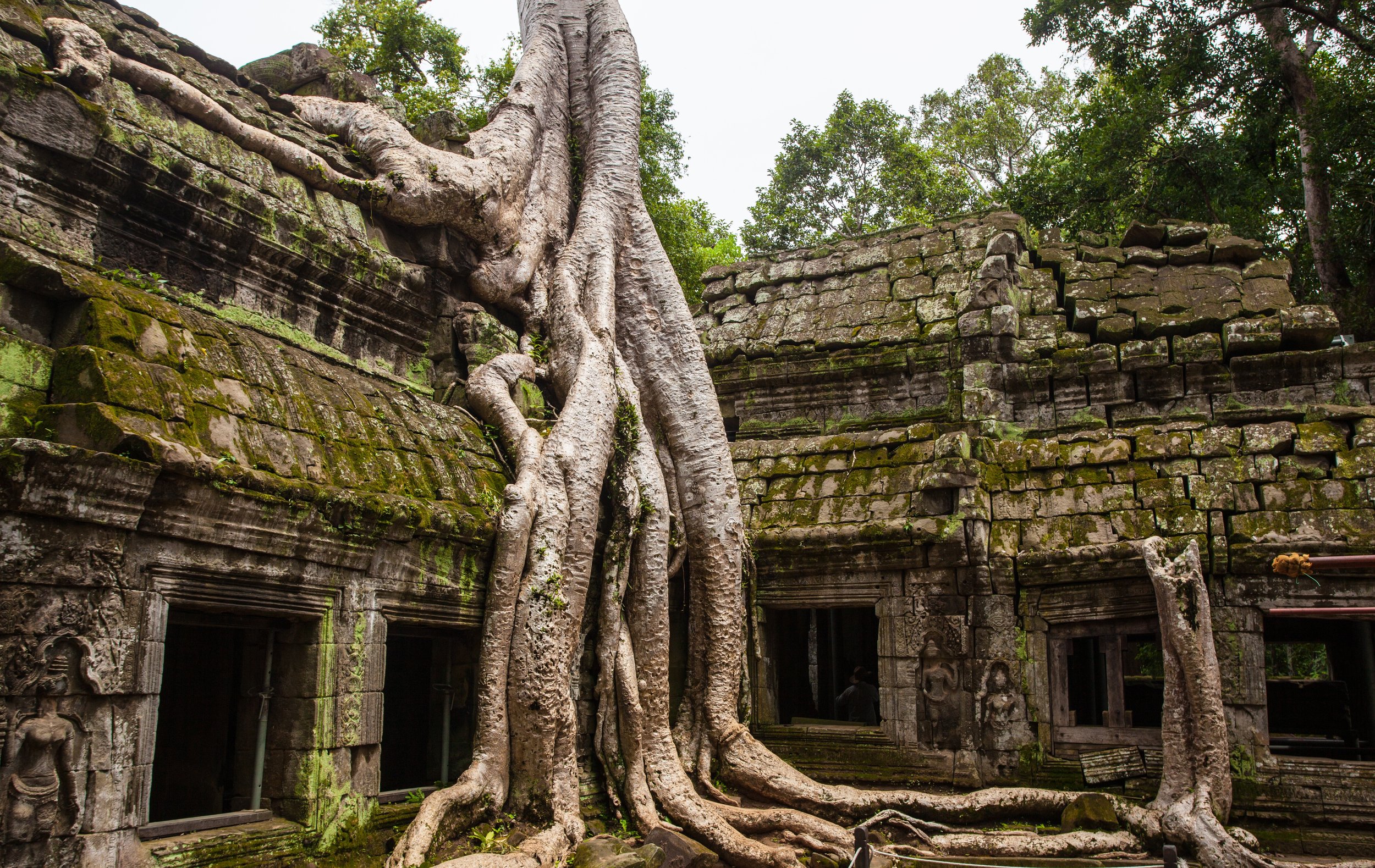
CAMBODIA’S HIDDEN KINGDOM
Cambodia is arguably known worldwide for one “image”: the forgotten kingdom of Angkor and its dozens of temples lost in the jungle.
These temples have worked historically to attract visitors in such a way that 95% of all tourists in Cambodia only come to Angkor resulting in a highly developed tourist infrastructure surrounding Siem Reap, the closest town to the Angkor Wat complex, while the rest of the country, from a tourism point of view, has developed at a much slower and peaceful pace. In our mind, Angkor is important but you’ll barely scratch the surface of understanding and realising how truly gorgeous Cambodia is if you don’t go further. In the northeast, you might see an endangered river dolphin and the Cardamom Mountains have spectacular waterfalls. Battambang has been declared UNESCO City of Performing Arts. Kompong Thom and Koh Ker boast amazing temples without the crowds. Krabey Island is a magical place to finish your khmer experience. Small towns like Kampot and Kampong Cham offer relaxation and charm.
Everything in Cambodia seems to have been designed to create memories, to sear them into your mind. Cambodians are truly some of the friendliest people out there. They have endured enough over the millennia’s to know how important it is to live in the moment, taking life one day at a time as they rediscover their heritage with pride.
Siem Reap’s Angkor Wat makes us believe in the limitless potential of all human beings. Here stands this temple that was built in the 12th century, perfectly located around a moat. When the sun rises, there is a symmetrical glow hovering amongst the water lilies. Human hands, without machines, built all this. We humans are capable of great things. And often, these great things become distant memories made of stone and jungle growth.
Cambodia not only changes our perspectives on history, but it makes you realize how this kingdom shaped the whole history of South East Asia. So don’t visit Cambodia only for Angkor Wat, visit Cambodia for the whole package – the history, food, culture, people, lifestyle, quirks – and hopefully you will realise there is so much more to this country.
WHEN?
The dry season (between November and May) divides into two distinct phases: the cool season (Nov–Feb) is the peak time for tourism – mild enough to explore the temples in comfort but warm enough to sunbathe by the coast. Humidity and temperatures rise during the hot season (March–May), with Phnom Penh and Battambang seeing peak daytime temperatures of 33–35°C. This is an excellent time to visit the coast, although Angkor is usually baking hot.
WHERE DOES IT START?
Siem Reap or Phnom Penh.
HOW LONG?
The standard tourist visa for Cambodia is 30 days. So we'd say that is a good starting point but to be realistic, 12-14 days are ideal. Start with the capital Phnom Penh, then of course the amazing Angkor temples, then venture off the chart and explore the Cardamom mountains before finishing along the coast in magical Krabey Island.
DID YOU KNOW?
Angkor Wat is made from between 5 and 10 million stone blocks, each weighing 1.5 tons!












